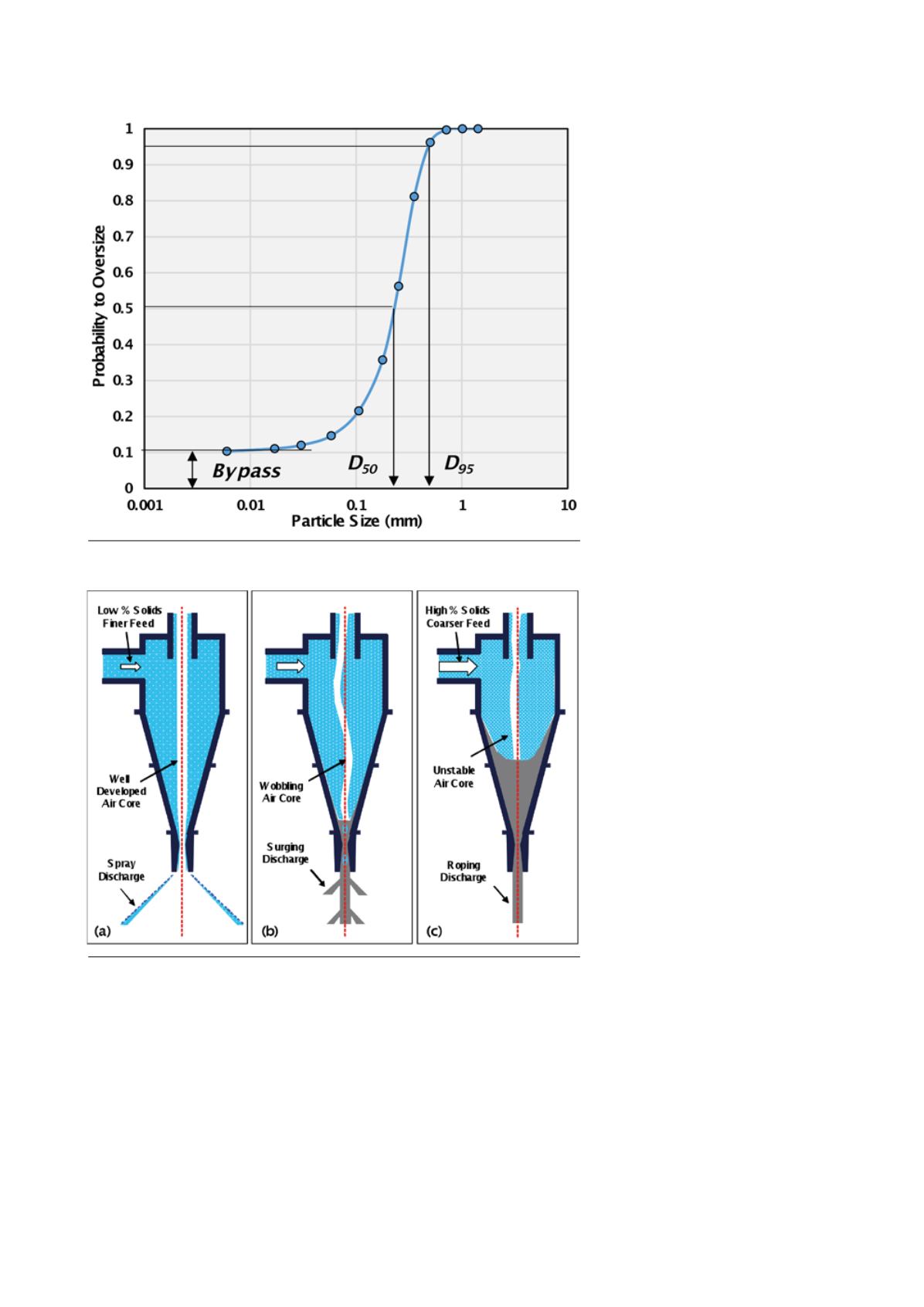
tangentially, and the rotating fluid
field introduces a centrifugal force
that increases the settling velocity of
the particles. Larger particles settle
quickly, are pinned to the edge of the
cyclone and eventually are discharged
from the bottom. Alternatively, fine
particles do not settle and are
discharged from the cyclone overflow.
Since settling velocity is also
dependent on particle shape, particle
density and other factors, cyclones do
not separate as well as sieves.
Furthermore, the issue of fine
contamination in the coarse product
(also called ‘bypass’) is ever-present
and unavoidable.
Since the classification process is
less than perfect, a separation curve
(such as Figure 2) is used to analyse
the performance. This plot shows the
probability that a particle of a given
size will report to underflow (i.e. the
coarser oversize product). Large
particles have a high chance of
reporting to underflow, while small
particles have only a low chance. As
discussed in the preceding section,
the probability of small particles
reporting to the oversize is not zero.
Some of this material will always
bypass the separation process and
report with the coarse material out
the cyclone Apex.
The nomenclature used to describe
cyclone performance is derived from
this separation curve. Particles near
the size of separation get the most
‘confused’ as to whether they should
report to overflow or underflow. In
fact, the size of the particle that has an
equal chance of reporting to either
stream is identified as the ‘D50’ or
‘cutsize’ for the cyclone. In this case,
the D50 is about 0.25 mm. The D50
designation has become the standard
way that cyclone manufacturers
specify the size of separation.
Unfortunately, as indicated on the
plot in Figure 2, particles with a
diameter of 0.5 mm still only have a
95% chance of reporting to the
underflow, which means that the
remaining 5% of those coarse particles
report to the fine product. If the
cyclone in question is being used to
split flotation and spiral feed, these
values indicate that 5% of the 0.5 mm
material will report to flotation. While
5% seems a small number, this value
can actually equate to a fairly large
tonnage and, as Figure 1 indicates,
even a small tonnage of misplacement
can have drastic economic
implications.
Some classifying cyclone vendors
have recognised this problem and
prefer to quote the D95 value for the
cyclone. The D95 represents the size at
which 95% of particles report to
oversize. In the current example,
D95=0.5 mm, which is much larger
than D50=0.25 mm. In cases where
downstream processes really cannot
handle misplaced oversize (such as
flotation), the D95 is probably a better
indicator of sizing performance.
Nevertheless, the best suggestion is to
Figure 2. Separation (or partition) curve for a typical hydrocyclone.
Figure 3. Variations in discharge behaviour for a classifying cyclone: (a) normal
operation, (b) surging discharge, (c) roping discharge.
24
|
World Coal
|
June 2016


